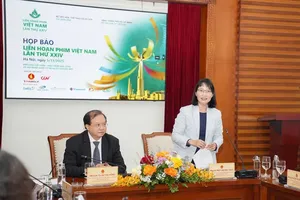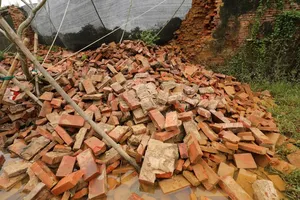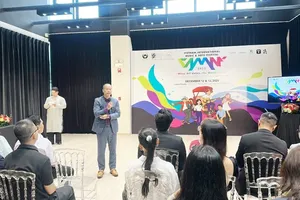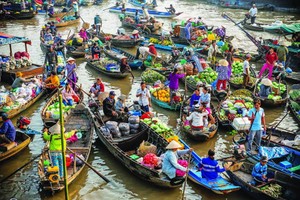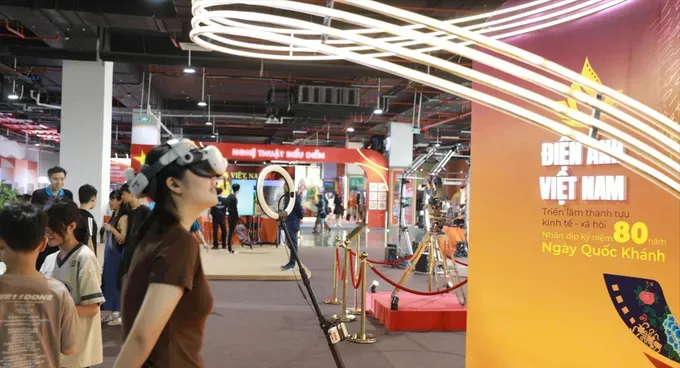
The Vietnam Institute of Culture, Arts, Sports and Tourism (VICAST) recently hosted a workshop titled “Theoretical Foundations and International Experience in Improving Institutional Frameworks for Cultural Industry Development.” The event gathered domestic and international experts, policymakers, and creative enterprises to analyze bottlenecks, share global insights, and propose new directions for growth.
Institutional reform – The key to unlocking growth
Culture has long been recognized as a driving force and a pillar of sustainable development. Yet to turn this vision into reality, Vietnam needs a coherent, flexible, and robust institutional system—one where the State, businesses, and the creative community collaborate to create value.
At the workshop, Associate Professor Nguyen Thi Thu Phuong, Director of the Vietnam Institute of Culture, Arts, Sports and Tourism, stressed that while Vietnam already has a clear vision and strategy, “the biggest bottleneck today lies not in the vision, but in the institutional framework.”
Despite existing resolutions and strategies, operational mechanisms remain fragmented, with weak coordination between central and local levels, and limited linkage among the State, enterprises, and creative communities. Experts pointed to three critical gaps:
- Lack of a strong coordinating mechanism to connect culture with other sectors
- Insufficient policy and investment tools tailored to cultural industries
- Limited flexibility in inter-agency collaboration
According to Associate Professor Nguyen Thi Thu Phuong, in the context of Vietnam’s two-tier local governance model, achieving harmony between “hard institutions” (administrative and legal frameworks) and “soft institutions” (cultural and creative frameworks) has become increasingly urgent. Without timely adjustments, cultural industries will remain at the potential stage rather than becoming a true engine of growth.
Therefore, institutional improvement is not merely an administrative necessity but a strategic step directly tied to the nation’s sustainable development capacity. When culture is regarded as the foundation of soft institutions, cultural industries do more than generate creative products—they help build social trust, local identity, and the overall appeal of the investment environment.
Promoting PPP Model
Representative of the British Council Pham Hong Minh shared that in the United Kingdom, in 2023 alone, the creative industries contributed up to £124 billion, accounting for 5.2 percent of GDP and creating 2.4 million jobs. This success stems from a solid and flexible institutional system, in which the central government, independent agencies, and local authorities coordinate closely. According to her, Vietnam should encourage the formation of national art funds, regional creative funds, and promote public-private partnerships (PPP) to create sustainable development resources for the sector.
Based on domestic practical experience, General Director Pham Minh Toan of Vietfest, specializing in organizing large-scale cultural and entertainment projects, assessed that PPP is "an effective connection model among the State, enterprises, and the creative community." Citing experiences from the UK, South Korea, Japan, and Singapore, he proposed issuing a separate decree on PPP in the cultural sector, allowing intellectual property and brand to be counted as a form of capital contribution, and simultaneously establishing the National Creative Content Development Fund following the KOCCA model in South Korea. Piloting a National Cultural PPP Center in Ho Chi Minh City will help form creative cooperation zones, tax incentives, and infrastructure space for cultural enterprises.
Being an expert in the field, Ms. Nguyen Thi Thu Ha from the Vietnam Institute of Culture, Arts, Sports and Tourism suggested that China's experience also offers many insights. This country has linked the cultural industry with its long-term socio-economic development strategy, building art zones such as 798 in Beijing or Moganshan 50 in Shanghai where businesses, artists, and investors converge. Vietnam can apply this model to build a cultural industry ecosystem associated with creative urban areas and the digital economy.
Based on these international experiences, many experts agreed that Vietnam should proactively transform awareness into specific actions such as completing the inter-sectoral institutional framework; creating specific financial mechanisms for creative enterprises; and delegating stronger authority to cultural, tourism, and heritage cities. According to Associate Professor Nguyen Thi Thu Phuong, only when institutions are perfected, the cultural industry can truly become a development pillar, fostering harmonious growth among the economy, culture, and people.
